Climbing roses can completely transform a garden wall, fence, or trellis into a breathtaking canvas of blooms—but getting them to look like those lush magazine pictures takes more than just planting and hoping for the best.
Unlike traditional vines, climbing roses don’t have tendrils or suckers to cling on their own. Without guidance, they can grow long, unruly canes that flower sparsely. But with a little patience and the right techniques, you can train them to explode with blooms season after season. In this guide, we’ll show you exactly how to grow climbing roses that thrive—whether you’re supporting them on a trellis or training them into elegant arcs through self-pegging.
🌿 Training Climbing Roses on a Trellis
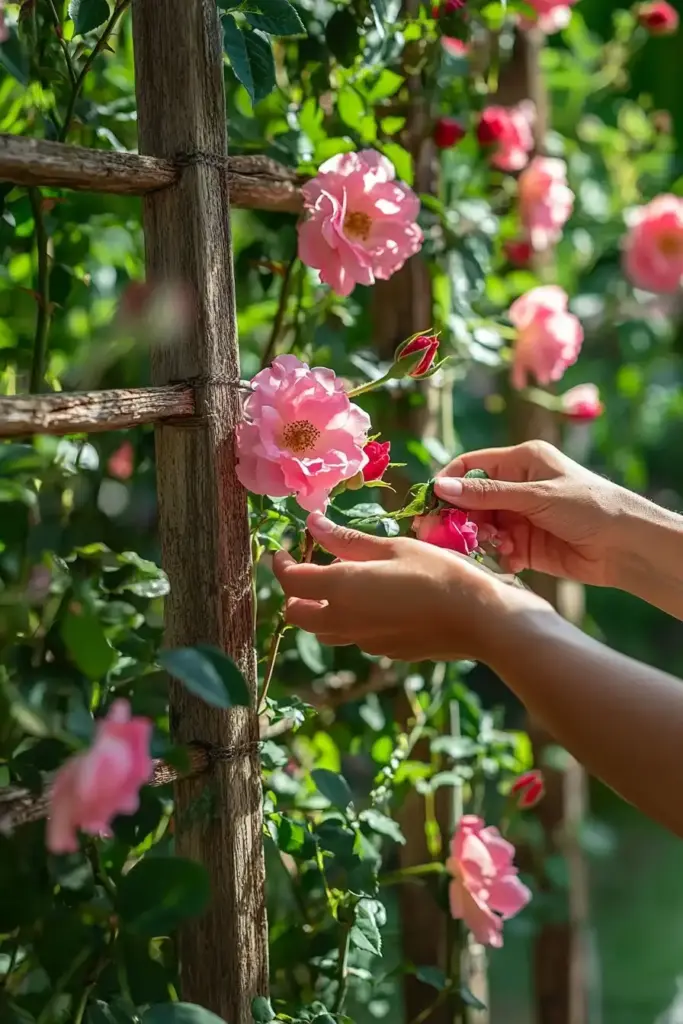
One of the most effective (and visually striking) ways to grow climbing roses is by training them on a trellis. This method not only helps guide their growth but also encourages more blooms by spreading the canes horizontally—triggering flower production along their length instead of just at the tips.
1. Choose the Right Location and Trellis
- Sunlight matters: Pick a spot that receives at least 6 hours of full sun daily.
- Proper placement: Set the trellis about 3 inches away from a wall or structure to allow airflow and prevent disease.
- Sturdy support: Choose a strong trellis that can handle the weight of mature canes over time.
2. Gently Secure the Canes
As your rose grows, tie the stems loosely to the trellis using soft garden tape or stretchy ties. Avoid using anything that could cut into the stems as they thicken.
- Work gradually: Don’t force the canes. Let them grow naturally and guide them over time.
- Do not prune too early: Wait until the rose has covered most of the trellis before doing major shaping.
3. Train for Horizontal Growth
Climbing roses naturally want to grow upward, but you’ll get more flowers by encouraging sideways or fan-shaped growth. Gently bend new canes outwards to cover more of the trellis, mimicking the natural shape of a blooming arch.
4. Regular Pruning Is Key
To keep your climbing rose blooming and healthy:
- Thin out older canes every few years to make room for vigorous new growth.
- Trim back overly thick branches that block sunlight and air circulation.
- Deadhead spent blooms throughout the season to encourage continuous flowering.
💡 Pro Tip: Prune your climbing rose in early spring, just as buds begin to swell. And don’t toss those faded blooms—dried rose petals make lovely, fragrant potpourri!
🔁 How to Self-Peg Climbing Roses for More Blooms
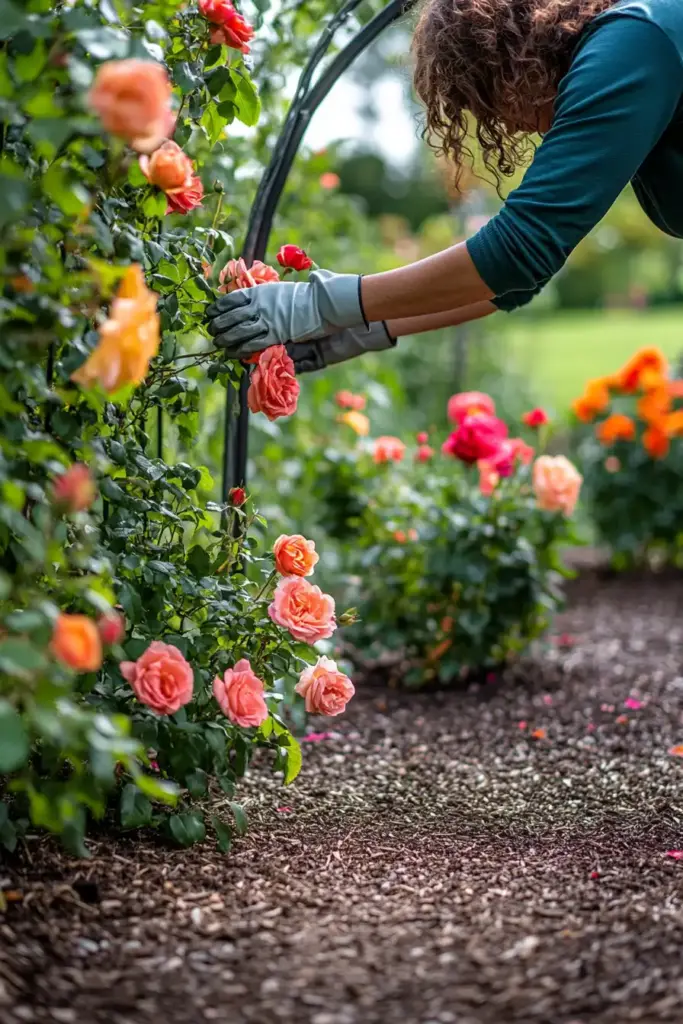
Self-pegging is a lesser-known but incredibly effective technique that can dramatically increase flower production on climbing roses. Instead of letting those long canes shoot straight up, you loop and secure them toward the base of the plant—triggering blooms along the entire cane thanks to gravity and hormone redirection.
1. Start with Pruning
Before you begin self-pegging, give your climbing rose a good tidy-up:
- Remove dead or weak growth
- Trim away old, unproductive leaves
- Clear space at the base of the plant for cane looping
2. Loop the Strongest Canes
Select 4 to 6 of the thickest, healthiest canes. Carefully bend each one downward into an arch so that the tip nearly touches the base of the plant.
- Use thick gloves to avoid thorns
- Secure the cane tip with soft plant tape, leaving a bit of slack to accommodate growth
- Aim to place the tip 2–3 inches from the base for a full loop
3. Tuck in the Smaller Canes
Once the main canes are pegged, look for medium-sized stems. These can be gently trained and tucked within the “cage” created by the larger loops, helping fill in the shape and keep the rose compact and full.
4. Annual Maintenance
Each spring:
- Check your loops and ties—adjust as needed to prevent damage
- Replace one or two older canes with new vigorous ones to keep the plant productive
- Always self-peg during your usual rose-pruning season, which varies by climate
🌱 Quick Tip: Self-pegging only works with long, flexible canes—usually 8 to 10 feet or more. If yours aren’t quite there yet, give them another season to grow.
🌸 Best Climbing Rose Varieties to Grow in Your Garden
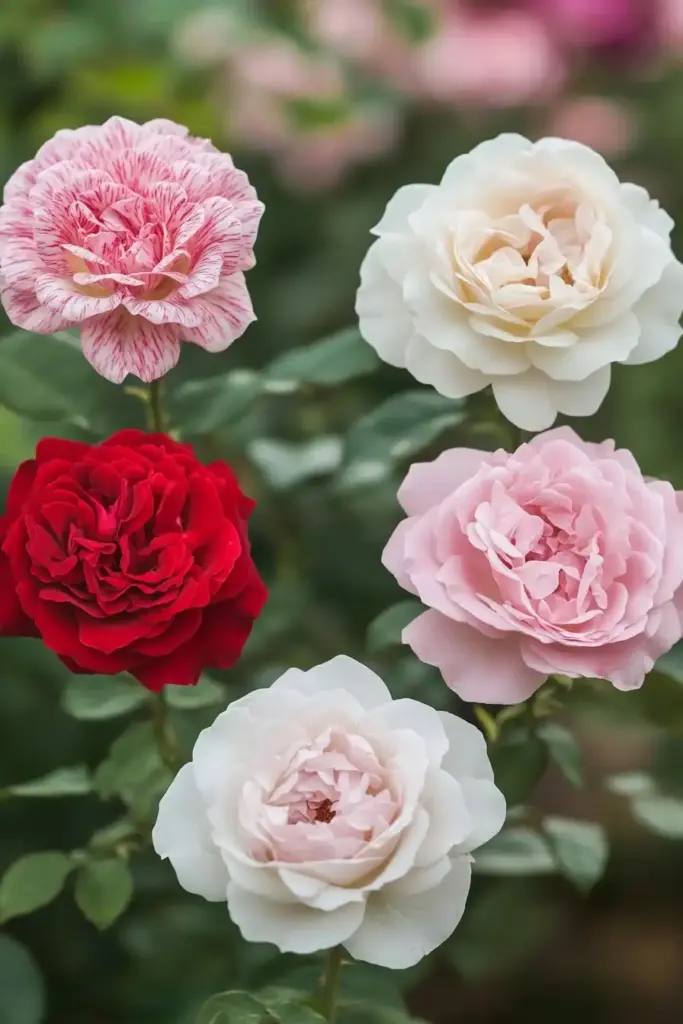
Whether you want bold color, repeat blooms, or old-fashioned charm, there’s a climbing rose variety to match your garden dreams. Here are a few favorites that gardeners love for their performance and beauty.
🌹 1. ‘Fourth of July’ (Rosa ‘Fourth of July’)
- Color: Red and white striped, candy-cane appearance
- Fragrance: Spicy and sweet
- Blooming: Repeat bloomer
- Zones: USDA 5–10
- Why it’s special: Adds a festive burst of color and handles heat well
🌷 2. ‘Eden’ (Rosa ‘Eden’)
- Color: Soft pink, cream, and yellow double blooms
- Fragrance: Mild, classic scent
- Blooming: Reliable rebloomer
- Zones: USDA 5–11
- Why it’s special: Romantic and full—great for cottage-style gardens
🌺 3. ‘American Beauty’ (Rosa ‘American Beauty’)
- Color: Deep rose pink
- Fragrance: Strong and classic
- Blooming: Spring and repeat blooms
- Zones: USDA 5–9
- Why it’s special: Old-fashioned charm with shade tolerance
❄️ 4. ‘Iceberg’ (Rosa ‘Iceberg’)
- Color: Crisp white, full blossoms
- Fragrance: Light, subtle scent
- Blooming: Heavy bloomer throughout the season
- Zones: USDA 4–9
- Why it’s special: Great for cooler zones and a timeless garden look
🌼 5. ‘Cecile Brunner’ (Rosa ‘Cecile Brunner’)
- Color: Blush pink, petite flowers
- Fragrance: Sweet, delicate aroma
- Blooming: Once in late spring/early summer
- Zones: USDA 6–10
- Why it’s special: Exceptionally vigorous; perfect for arches and pergolas
These climbing rose varieties are ideal companions for both trellis training and self-pegging techniques. Choose one that matches your climate and style preferences, and you’ll be rewarded with a garden full of stunning vertical color.
🌱 Final Tips for Growing Climbing Roses Successfully

To make the most of your climbing roses and ensure they put on a spectacular show year after year, keep these practical tips in mind:
💡 Quick Rose Care Tips
- Deadhead regularly to encourage repeat blooming
- Feed your roses with a balanced fertilizer in spring and mid-summer
- Water deeply once or twice a week—especially during dry spells
- Mulch around the base to retain moisture and suppress weeds
- Inspect for pests and diseases, such as aphids or black spot
✂️ When to Prune Climbing Roses
- Best time: Early spring, just as buds begin to swell
- Avoid heavy pruning in fall, as it may encourage tender new growth that won’t survive winter
- Cut back weak or damaged canes and train the healthiest ones using trellis or self-pegging methods
🌺 Conclusion: Climbing Roses Made Easy
Learning how to grow climbing roses is a rewarding journey that pays off with a cascade of color, fragrance, and elegance in your garden. Whether you train them on a trellis or master the self-pegging technique, the key is gentle guidance and consistent care. With the right support and a bit of patience, your climbing roses will flourish—turning walls, arches, and fences into flowering masterpieces.
🌿 Love gardening inspiration? Follow me on Pinterest for bold plant ideas, tips, and seasonal color!
More Posts
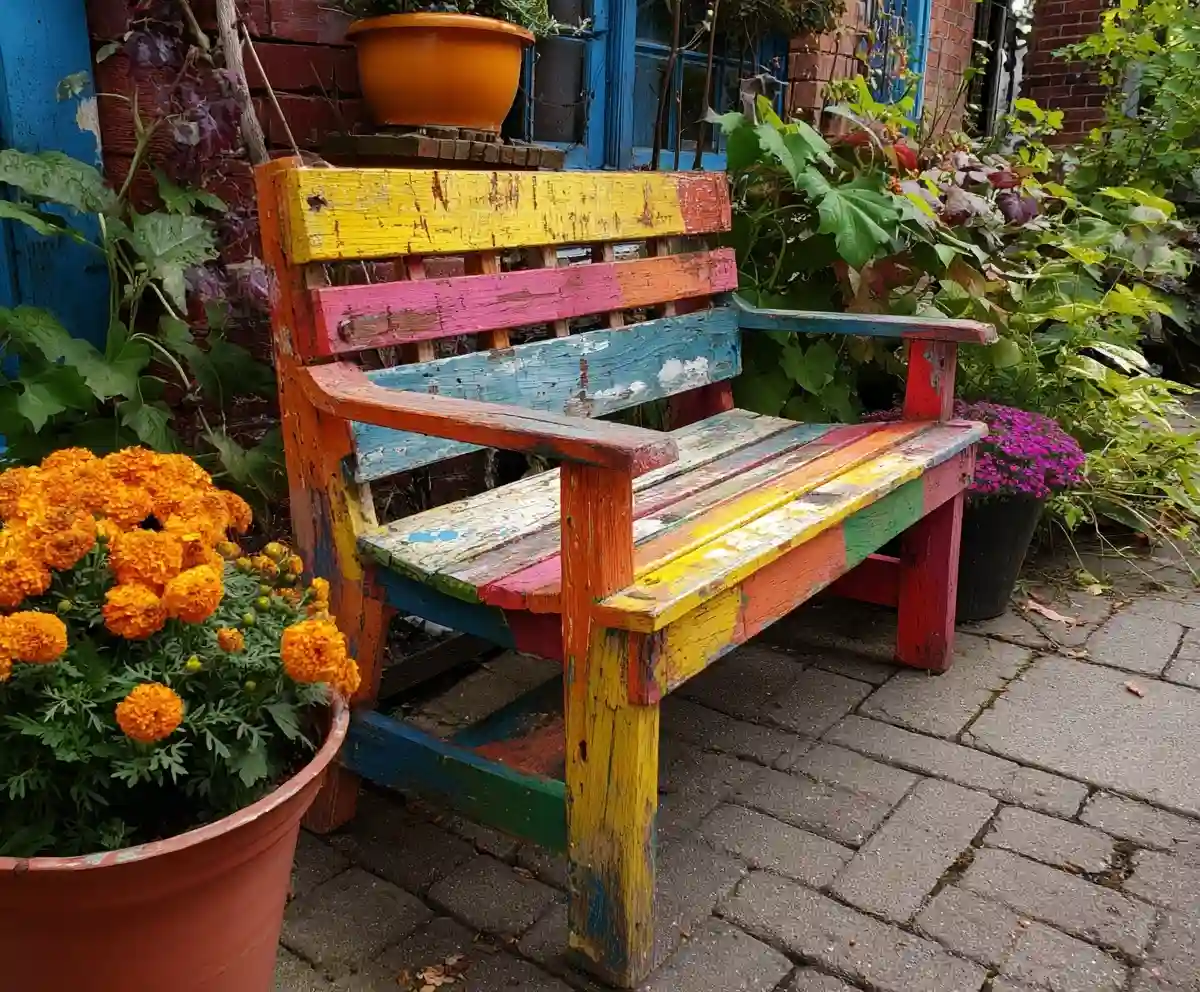
19+ Budget-Friendly Backyard Makeover Ideas
Backyard makeover ideas can turn even the most ordinary outdoor space into a warm, inviting retreat—without draining your wallet.
Read More →
21 Stunning & Simple DIY Clematis Trellis Designs
DIY clematis trellis designs are a beautiful way to blend creativity with function in your garden.
Read More →
12 Full Sun Perennials That Bloom All Summer
Explore a selection of hardy perennials that flourish and bloom beautifully in full sun throughout the summer.
Read More →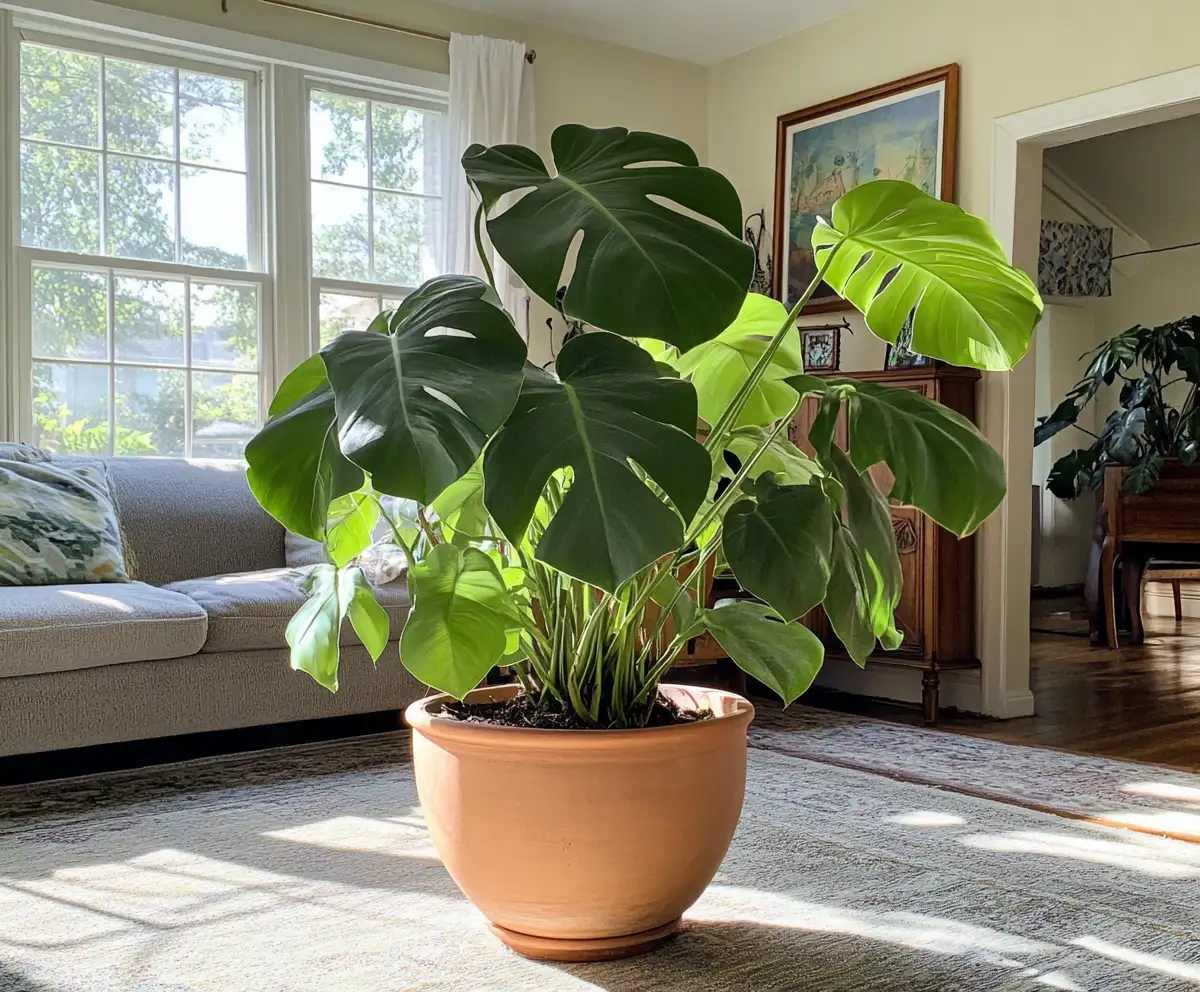
Houseplants for Living Room
Find the perfect houseplants to brighten and purify your living room while adding a touch of nature indoors.
Read More →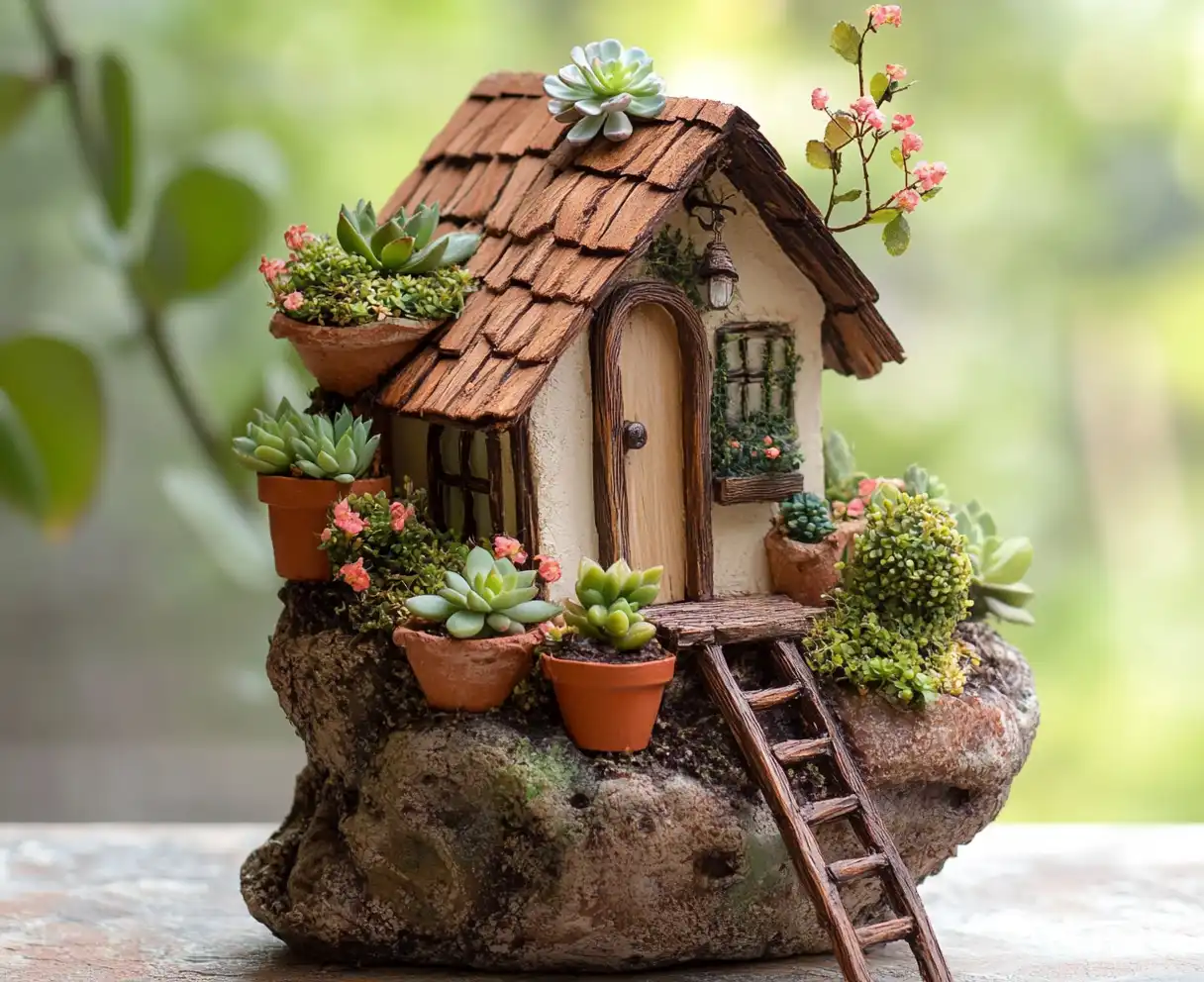
Backyard Play Area for Kids
Create a fun and safe backyard play area for kids with these inspiring design ideas and tips.
Read More →
Top Privacy Trees
Discover top tree varieties that provide natural privacy and enhance your outdoor space.
Read More →


